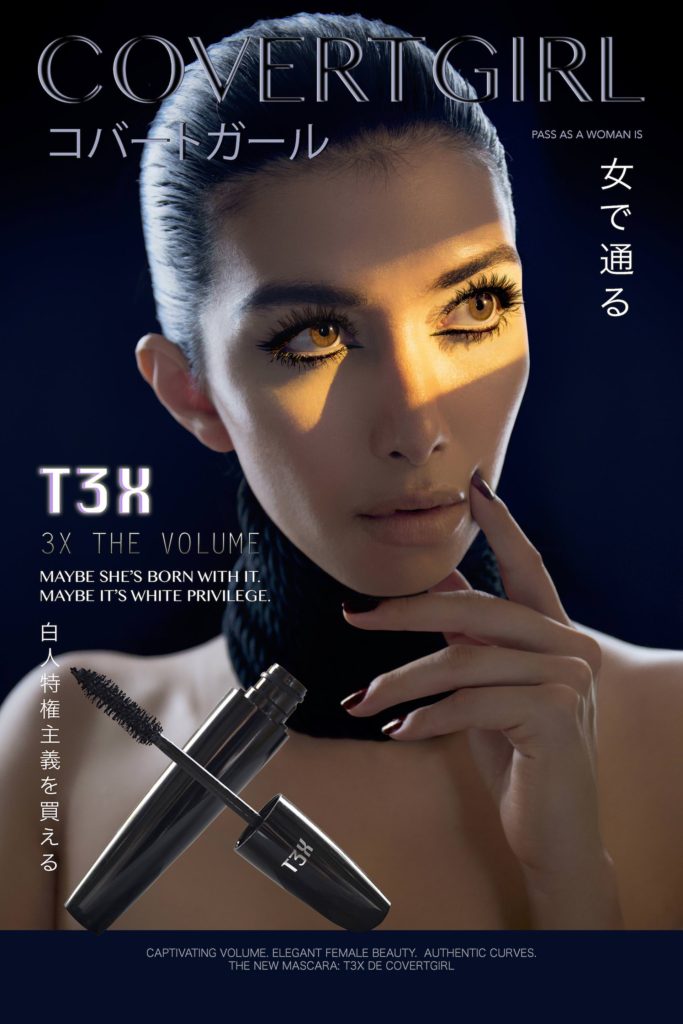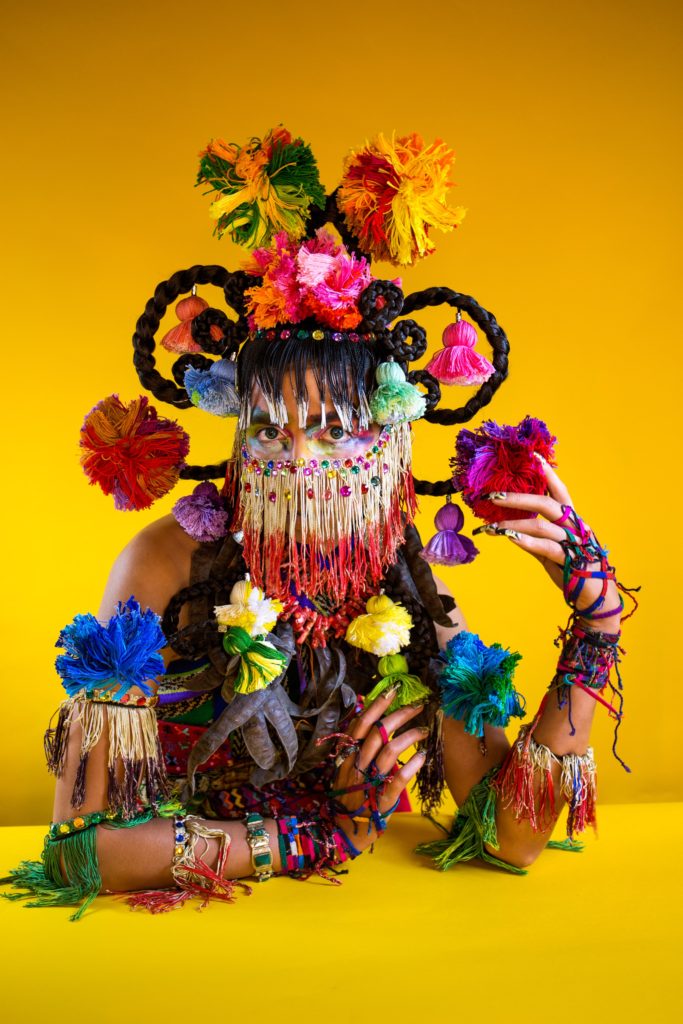How does Cindy Sherman or Martine Gutierrez represent and mimic stereotypes in their photography?
Introduction
“The artist disappears, no one knows where he went, he leaves his signs here and there he is seen in this part of town and, the next moment, miraculously, on the other side of town. One sense him rather than sees him- A Lounger, a drunkard, a tennis-player, a bicycle rider, always violent denying that he did. Everyone gives a different description of the criminal.”– Ray Gun
Cindy Sherman is well known for her different costumes interpretations and her masquerades, in fact when Cindy Sherman was just a child, she loved to play dress up and she would create elaborate costumes out of a trunk of old clothes, many of which belonged to her great grandmother. As her career in photography blossomed, she would search flea markets to uncover old clothes, where she began to be inspired by the people surrounding her. Within her photography, she played a distinctive character in each of her shoots, creating identities much like Hitchcock’s heroes, a busty Monroe, an abused victim, a corpse, a cowgirl, a desperate clown and more on. Was her dressing up an escape? ” If you don’t like me this way, how about you like me this way?” “Or maybe you like this version of me.” (Cindy Sherman in Reilly, 2018) This reinforces the symbolism. She uses multiple characters in her photography to show a sense of diversity and mimic the numerous stereotypes that she came across. It is amazing how many characters Cindy Sherman can play at once. It is not just the way she poses. The style, the clothes, the accessories, the make-up, the decorations, the light, the gestures of expression, the framing are as important to create the ”Mise-en-scene”. Martine Gutierrez is the artist with whom I can identify with the most. In her photos, fashion is especially important. They help to represent stereotypes of indigenous women. Her images have an eccentric style, common gold, a mixture of pop and Indigenous culture. The colours and details in some of her images are fascinating and she uses Guatemalan textiles from her family’s collection styled with jewellery, bananas, high heels, and other accessories. She illustrates a contemporary living history, not one that is just buried and dismantles the tropes of nostalgia and poverty that are stereotypically associated with indigenous identity, to quote the artist. Her photos also confront the message of the long and harmful history of the fashion industry and how they appropriate of the Indigenous culture. “ Fashion is a good veneer for making people to look at what otherwise might make them feel uncomfortable” (Martine Gutierrez, 2018, artist magazine) For my own photographic responses I am intending to address Mexican stereotypes using masquerade. The name “Masquerade” takes up the theme of the “mask”. It is an intriguing subject to perform in photography since it hides the real face and therefore allows you to change your appearance without changing your identity. I will explore fashion and elements of clothing and how both males and females’ dress. The styling of the images that I make in response will reference a fashion shoot but also include parody.
In 1977 Cindy Sherman began a series named Untitled Film Stills. I find this series very captivating since she exposes the stereotype of women in classic movies from the 50’s /60’s that we feel we must have seen. Sherman usually dresses very feminine, using make-up, wigs, and different poses to mimic the portrayal of women who are passive and sexualised conforming to male fantasies. Sherman always uses the male gaze by representing women in underwear, heavy make-up, or typically feminine costumes, to criticise this stereotype. She is disguising herself in different female roles like a sex object, career girl, housewife. Between 1970 and 1980 a debate emerged in photography by feminist. Criticizing Hollywood classics Laura Mulvey argued how women were portrayed in these films, they are only there for the pleasure of male viewers. In his seminal book Ways of Seeing (1972), art critic John Berger wrote, ”men look at women. Women watched themselves being looked at. This determined not only most relations between men and women but also the relation of women to themselves” (Berger in Wells 2003: 324). Mulvey also noted that between the camera framing the woman and the point of view of the male character looking at the woman’s character attract the audience. Reinforces the objectification of women in media. But the debate does not stop there since women in addition to being objected they have to have a specific appearance often young, slim and light-skinned. Latinos in the western media are the same, they have a specific physique. Latinas are exotic, seen with tanned brown hair and luscious lips. Men have long black mustacho, black hair, taint, small. Feminists also have argued that nudity in photography or in art is masquerade, it is an excuse to contemplate nudity, even if it is depicted in an abstract or pleasing way.

In her photography, Martine Gutierrez produces narrative scenes that use elements of pop culture to play with personal and collective identity in terms of race, gender, class, and culture. Indigenous woman is a fictional fashion magazine that features editorials detailed through Gutierrez’s work controlling her own identity. She is her own editor, model, photographer, stylist make-up, designer, and author. Gutierrez wonders how identity is formed, how it expresses itself, values itself and weighted. The magazine is a celebration of Mayan Indian heritage, it is constantly evolving, the magazine investigates the ways in which our sense of self is socially constructed and makes us ask more questions that we do not have the answers to. Throughout the indigenous woman, Gutiérrez challenges the stereotypes and the limitation that one can have in their identity that is imposed by white supremacy and colonialism. In her exhibition she reconstructs certain advertisements with a touch of parody. These skits explicitly illustrate these themes and allow you to express yourself more openly. Like on the tagline that appears on the cover girl’s mascara ad ”maybe she is born with it maybe it’s white supremacy” (Martine Gutierrez, cover girl ad, Indigenous Woman p43) and another advertisement for whitening soap features on the label is written ”keep out of eyes, keep away from children, animals, natural resources and indigenous cultures. Destroys everything on contact” (Martine Gutierrez, white wash ad, Indigenous Woman p13) .As the magazine letter to the editor states ” Indigenous woman marries the traditional to the contemporary, the native to the postcolonial and marginalized to the mainstream. In the pursuit of genuine selfhood revealing cultural inequities along the way’‘ Another interesting series she has is her series of demons called Deities of the ancient world resurrected in hair. She use element of masquerade to represent Aztec Gods. Gutiérrez is dressed in gold jewellery, masks, and a crown made of braided hair. They are Aztec gods that manifest concepts of love, duality, wealth… The artist said: “I was looking for an iconography that would celebrate the bodies of the binary deities even larger than the bodies because, in general, we tend to see ourselves in the image of a god, whatever that god is”.(Martine Gutierrez, 2018 Indigenous woman p92)
I have used this essay to investigate how Cindy Sherman and Martine Gutierrez use elements of mimic and stereotypes in their photographs to express what they see in their surroundings and the media (such as films, advertising, etc.) Thanks to these artists, I learned how to express my feelings with a touch of humour in relation to the stereotypes of Latinos in my photography. They each adopt the same approach for different battles, Martine Gutierrez wants to show the beauty of indigenous culture while Cindy Sherman wants to fight for the women’s paper in Hollywood classics. I learned about the feminists like Laura Mulvey that fought for women’s role in the media during the 70s. Which led to artist like Cindy Sherman to mock those stereotypes. After doing research for the essay I discovered more personal matter about both artists, Since a little kid Cindy Sherman love the idea of costumes and imitate people she saw on the streets. For Martine Gutiérrez it is important to demonstrate her culture, Indigenous Woman is a resource to reflect on heritage and narrative.
Bibliography:
Wells, L. (ed), (2003), The Photographer Reader. London: Routledge
Reilly, M. (ed), (2018), Courtesy the artist and Metro pictures. New York



